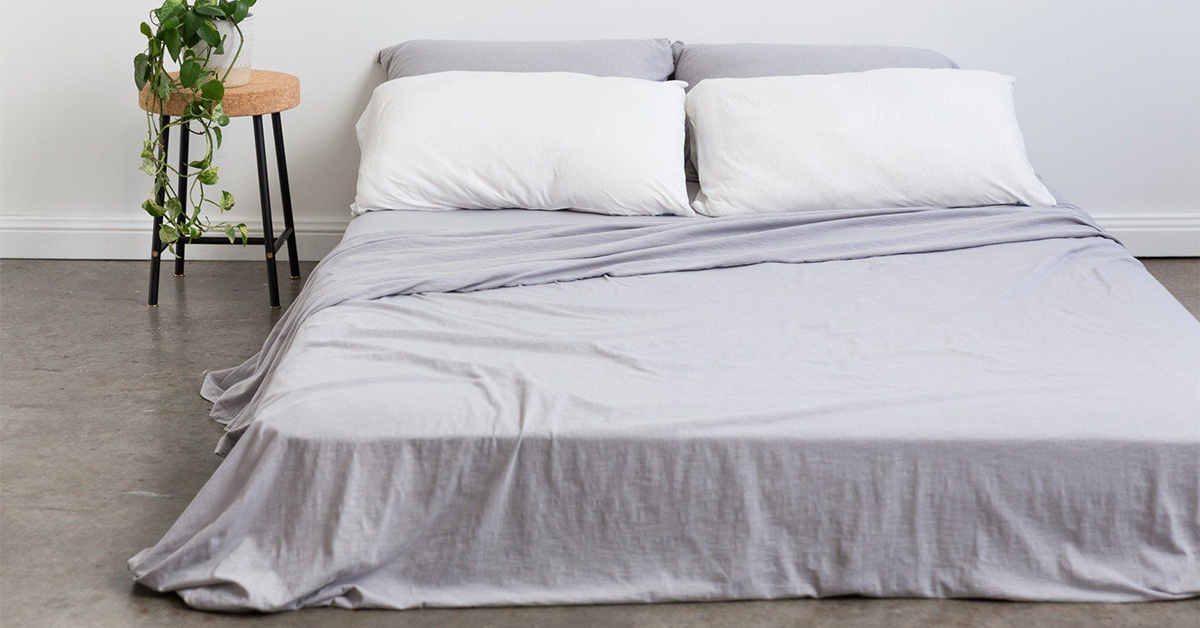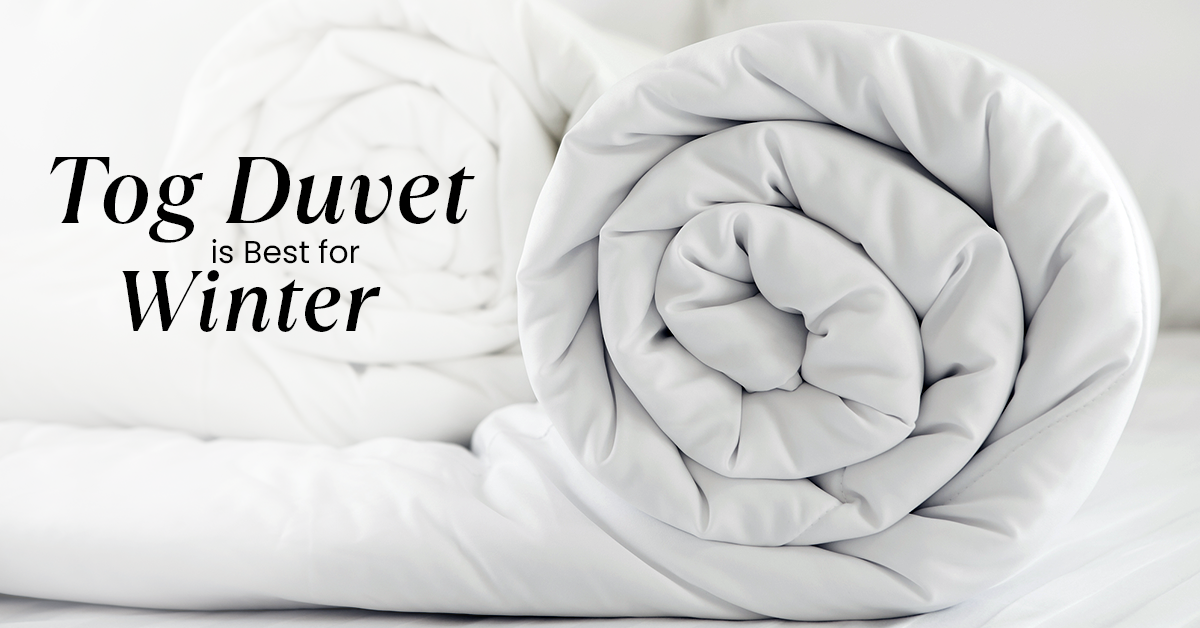The world of bedding can be fascinating and confusing, with various layers and types of sheets. One essential component that often takes center stage is the flat sheet. In this comprehensive guide, we'll delve into the intricacies of flat sheets, exploring their types, materials, sizes, and the age-old question – do we need them?
What Is A Flat Sheet?
Before unraveling the layers, let's understand a flat sheet. A flat sheet, or a top sheet, is a rectangular piece of fabric between you and your duvet or comforter. It typically comes in the same size as your fitted sheet but is often larger to allow for tucking in at the sides and foot of the bed.
Types Of Flat Sheets – Weave & Material
Regarding flat sheets, the weave and material are crucial in determining their feel, durability, and overall quality. Let's explore the materials and woven patterns commonly used in flat sheets.
A. Materials Used:
-
Cotton: Cotton flat sheets are a popular choice, known for their breathability and softness. Egyptian cotton, in particular, is renowned for its luxurious feel and durability. If you're a fan of natural fibers, cotton is a classic and comfortable option.

-
Linen: Linen flat sheets are a more textured and durable choice. Linen naturally regulates temperature, keeping you cool in the summer and warm in the winter. Although linen sheets may feel stiffer initially, they become softer with each wash.

-
Polyester: Polyester flat sheets are a budget-friendly option with durability and wrinkle resistance. While they may lack the breathability of natural fibers, they are easy to care for and can be a practical choice for those on a tight budget.

B. Weave Patterns:
- Percale: Percale is a closely woven fabric with a crisp and matte finish. Percale sheets are breathable, lightweight, and perfect for those who prefer a relaxed and smooth feel against their skin.
- Sateen: Sateen is woven in a way that exposes more thread on the surface, creating a silky and smooth finish. Sateen sheets are known for their luxurious feel and subtle sheen, making them a favorite among those who enjoy a touch of luxury.
- Twill: Twill weave creates a diagonal pattern on the fabric, resulting in a solid and durable sheet. Twill sheets are often soft, with more weight than percale or sateen.
UK Standard Flat Sheet Dimensions And Sizes
Now that we've explored the materials and weaves let's look at the standard dimensions and sizes of flat sheets in the UK.
- Single: A flat sheet typically measures 178 x 254 cm (70 x 100 inches).
- Double: For a double bed, you'll find flat sheets with dimensions around 229 x 254 cm (90 x 100 inches).
- King: King-sized flat sheets are larger, measuring approximately 264 x 275 cm (104 x 108 inches).
- Super King: Super king flat sheets are the largest, with dimensions around 305 x 275 cm (120 x 108 inches).
What Is A Flat Sheet Used For?
Now that we better understand what flat sheets are made of and the various types available, let's explore their purpose. What is a flat sheet used for, and do you need one?
The primary function of a flat sheet is to provide a barrier between you and your duvet or comforter. This extra layer serves several purposes:
- Hygiene: The flat sheet acts as a protective layer, keeping your duvet or comforter clean and reducing the frequency of washing. Washing a flat sheet is generally more straightforward and quicker than cleaning a bulky duvet.
- Temperature Regulation: Depending on the material, a flat sheet can help regulate your body temperature while you sleep. Cotton and linen, for example, are breathable materials that wick away moisture, keeping you cool and comfortable.
- Bedding Ensemble: From a design perspective, the flat sheet is integral to the bedding ensemble. It adds a layer of color, pattern, or texture to your bed, contributing to the overall aesthetics of your bedroom.
Do You Sleep Under the Flat Sheet?
The age-old debate: do you sleep under the flat sheet or not? The answer ultimately depends on personal preference. Some people prefer the coziness of being enveloped by layers, while others find the flat sheet an unnecessary addition to their sleep routine.
If you choose to sleep under the flat sheet, tuck it securely at the sides and foot of the bed for a neat and tidy appearance. If you decide to forgo the flat sheet, your duvet or comforter becomes the top layer, providing a more straightforward and streamlined look.
How To Put A Flat Sheet On A Bed?
Putting a flat sheet on a bed may seem straightforward, but there's an art to achieving that hotel-like finish. Here's a step-by-step guide to ensure your flat sheet is ideally placed:
- Align the Top Edge: Begin by aligning the flat sheet's top edge with the mattress's top edge. The top edge of the sheet, often finished with a decorative hem or detail, should be placed at the head of the bed.
- Tuck In the Sides: Tuck in the sides of the flat sheet under the mattress. This creates a crisp and secure fit, preventing the sheet from coming loose during the night.
- Fold Over the Top: If your flat sheet has a decorative top edge, fold it over the duvet or comforter, exposing the finished side. This adds a touch of elegance to your bed.
- Coordinate With Duvet or Comforter: Ensure the flat sheet coordinates with your duvet or comforter in color and pattern. We have white, beige, cream and grey color. A well-coordinated bedding ensemble can enhance the overall look of your bedroom.
Can You Use A Flat Sheet As A Fitted Sheet?
While a flat sheet and a fitted sheet serve different purposes, you can use a flat sheet as a makeshift fitted sheet in a pinch. However, remember that a flat sheet won't provide the exact snug fit as a fitted sheet designed with elastic edges to hug the mattress tightly.
If you find yourself without a fitted sheet, follow these steps to use a flat sheet as a substitute:
- Tuck In the Corners: Tuck the corners of the flat sheet tightly under the mattress, ensuring a secure fit at all four corners.
- Smooth Out Wrinkles: Smooth out any wrinkles or folds to create a flat surface for sleeping.
- Check Periodically: Throughout the night, ensure the sheet remains securely tucked under the mattress to prevent it from slipping off.
FAQs:
Do I Need A Flat Sheet?
The need for a flat sheet is subjective and depends on personal preference. While some people appreciate the extra layer for hygiene and design purposes, others find it unnecessary. Consider your sleeping habits and preferences to determine if a flat sheet suits you.
How Often Should I Change My Flat Sheet?
Ideally, you should change your flat sheet every one to two weeks. However, more frequent changes may be necessary if you sweat heavily or have allergies. Regular washing not only maintains hygiene but also prolongs the life of your bedding.
Can Flat Sheets Be Used Without A Fitted Sheet?
Yes, you can use a flat sheet without a fitted sheet by tucking the corners securely under the mattress. While it may provide a different fitted look, it can be a temporary solution.
What's The Ideal Thread Count For A Flat Sheet?
Thread count refers to the number of threads per square inch of fabric. A higher thread count often indicates a smoother and softer sheet. A thread count between 200 and 400 for flat sheets is generally considered comfortable and durable.
Conclusion
The flat sheet is crucial in enhancing your sleep experience in the intricate bedding world. From choosing the suitable material and weave pattern to understanding the dimensions and sizes, each aspect contributes to your bed's overall comfort and aesthetics. Whether you like the cozy layers or prefer a minimalistic approach, choosing a flat sheet ultimately depends on your personal preferences. So, unravel the layers, make your bed a sanctuary, and enjoy a good night's sleep surrounded by comfort and style.


